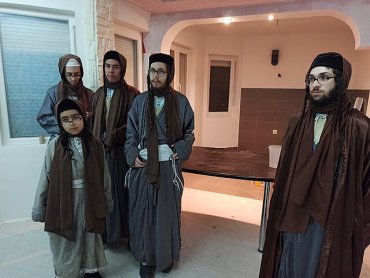
Is Surrogacy Permitted According to Orthodox Judaism?
Dear JITC-
I saw in Shtisel the topic of surrogacy came up. It wasn’t very favorable. Is this across Orthodoxy or just in more right-wing circles?
Thanks,
G.S.
Dear G.S.-
Thanks for your question. I’ve never seen Shtisel (and I have no intentions to) but I assume you are referring to gestational surrogacy, in which a surrogate carries to term genetic material contributed by the couple. That’s what I’ll be addressing, rather than traditional surrogacy in which the surrogate also contributes the ovum.
One of the greatest misconceptions about Orthodoxy is that we don’t permit organ donation. The reality is that we do, though there may be some parameters that are more stringent than those provided under secular law. Similarly, surrogacy is permitted by most halachic authorities, though we have some uniquely Jewish concerns.
For example, while in vitro fertilization doesn’t require an act of intimacy, the surrogate shouldn’t be a woman for whom relations with the father would constitute incest (like his wife’s sister). Optimally, she should also be unmarried so that it shouldn’t smack of adultery. Some authorities prefer using a non-Jewish surrogate to minimize the possibility of the child growing up to marry a relative of the surrogate, while others prefer using a Jewish surrogate, for reasons we’ll discuss later.
Perhaps the greatest question surrounding surrogacy is who counts as the child’s halachic mother: the woman who contributes the genetic material or the one who delivers the baby? This doesn’t only affect whom the child must honor as his or her mother, it affects such disparate areas as whom the child may marry and inheritance laws. Accordingly, this is an important question.
The predominant position is that the birth mother is the halachic mother. This is largely based on a familiar aggadah surrounding the birth of Yaakov’s daughter Dina. The Talmud in Brachos (60a) tells us that Leah, pregnant for the seventh time, said that Yaakov was destined to father 12 Tribes, of which she had already given birth to six and each of the servants to two. If she gave birth to a boy, then her sister Rachel would only be able to give birth to one Tribe, fewer than even the servants. Leah therefore prayed and the fetus was changed to a girl. Yonasan Ben Uzziel on Genesis 30:21 notes that Rachel was also pregnant and the fetuses were switched so that Rachel got the boy and Leah the girl. Since Rachel is counted as Yoseif’s mother and Leah is counted as Dinah’s mother, we see that the birth mother is the halachic mother and not the conception mother.
The problem with relying on this source is that aggadah is by definition the non-legal portion of the Talmud, so using it in halachic rulings is questionable. There are, however, many halachic sources that also support this conclusion. For example, Yevamos 97b tells us that the twin sons of a woman who converted while pregnant may not marry one another’s wives, from which we can easily see that their halachic status is determined by birth and not by conception. Tosfos in Kesubos (11a) reaches the same conclusion regarding a pregnant woman who converts vis-à-vis inheritance. There is also a widespread Talmudic principle that a fetus is considered a part of the woman carrying it (see Baba Kama 78b, Chulin 58a, Gittin 23b, Sanhedrin 80b, et al.), which suggests the primacy of the woman who carries the fetus to term. Conversely, Yevamos 69b tells us that an embryo before 40 days is “just water,” downplaying the role of conception.
One surprising source in support of the “birth giver” as halachic mother comes from Rav Yekusiel Aryeh Kamelhar (19th-20th century). He based his conclusion on the laws of orlah, i.e., that we are not permitted to use the fruit of a tree for its first three years. The Talmud in Sotah (43b) discusses the branch of a two-year-old tree that was grafted onto a six-year-old tree. Rabbi Kamelhar states that the laws of orlah don’t apply to fruit from young branches that are nourished by an older tree. Since the law follows the source of nourishment and not the point of origin, he concludes that the same is true of an ovum transplanted into a new body. (Not every authority accepts the validity of this extrapolation.)
There are many more sources in support of the birth mother as halachic mother. While most authorities follow this opinion, there is also a strong position that the woman who donated the genetic material is the halachic mother.
First, there’s the idea that there are three partners in the creation of a child: the father, the mother and God, each of whom contributes something (the parents contributing to the child’s physical makeup and God contributing to the spiritual – Niddah 31a). This supports the idea of the “DNA donor” as halachic mother. Another Talmudic source (Sanhedrin 91b) tells us that the soul enters an embryo at the time of conception.
The Talmud in Yevamos (42a) tells us that if a couple converts to Judaism together, they must separate for three months so that they’ll know if a baby born to them was conceived before or after their conversion. This suggests that the child’s status is determined at conception rather than at birth.
Finally, Rav Ezra Bick shlita draws a logical conclusion: if the sperm is the determinant of paternity, it only makes sense that the ovum should be the determinant of maternity. (Again there are more sources beyond those we have cited.)
Since there are so many sources in support of each position, there is also an opinion that both the “birth giver” and the “DNA donor” should be considered halachic mothers. This doesn’t mean that the child “has two mommies,” just that, because of the doubt, we follow the halachic stringencies of both women being mothers.
This is why some favor the use of a Jewish surrogate: if both the genetic mother and the birth mother are Jewish, there will be no doubt that the baby is born Jewish. Babies born to non-Jewish surrogates are often converted in infancy so that they should be Jewish according to all opinions.
This is just one question surrounding the issue of gestational surrogacy. I can assure you, there wouldn’t be so much discussion on the topic if it weren’t permitted by a significant number of authorities. (This is not to say that it’s permitted for everyone “on demand,” just that it’s permitted under the proper circumstances.) It should go without saying that one who is considering surrogacy – either as the donor or the surrogate – should first consult with their own rabbi for guidance.
Sincerely,
Rabbi Jack Abramowitz
Educational Correspondent
Follow Ask Rabbi Jack on YouTube
If you found this content meaningful and want to help further our mission through our Keter, Makom, and Tikun branches, please consider becoming a Change Maker today.







